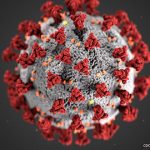The Future of Cognitive Research in Lupus
As in other disorders with white-matter pathology—such as HIV and multiple sclerosis—cognitive dysfunction in lupus may represent primarily reduced brain efficiency and not reduced brain function. Thus, continued attention to white-matter function with neuroimaging techniques such as DTI may lead to new insights into pathogenesis and approaches to therapy. Conference participants also agreed that elucidating the basis of focal lesions—such as hyperintense lesions on MRI or focal hippocampal disease—may be more informative for both diagnosis and research than the assumption that lupus cognitive dysfunction is definable by serological or cerebrospinal fluid tests. Recognizing the potential reversibility of early lesions offers hope for new treatments and improved outcomes.
In the same way that rheumatologists now distinguish different types of glomerulonephritis or skin disease in lupus, in the future we may distinguish among the many types and mechanisms of brain injury as well. Until we fully understand the meaning of cognitive dysfunction, clinicians should know that no single immunological or imaging study currently defines cognitive dysfunction in SLE. The abnormalities are real and prominent, but intelligent use of all available diagnostic tools is still required to assess a single patient.

